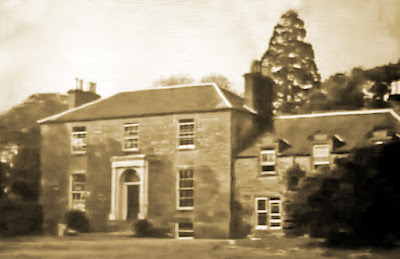1954: Farming at Kilquhanity - Learning How
Article based on stills from a 1954 video taken by an unknown person
1954 - Kilquhanity House
The Kilquhanity estate was, and as far as I know, still is, only about seven and
half acres in area and at least during the first few decades of its existence, the school rented nearby fields for its cows to graze. And in fact, for
many years the school employed a ‘farm hand’ member of staff who would look
after both the the grounds and the livestock.
The children were nevertheless, encouraged to engage in
all aspects of the life of the farm in order to satisfy John Aitkenhead's theory, that looking after livestock should be part of a child's education.
Even during the early 1970 - and as mentioned elsewhere - my
own last term at Kilquhanity was not as a pupil but as an assistant to Nicky
Walton, who at that time was employed as a farmyard worker. One of my jobs was
milking and cleaning the byre after milking.
Nicky Walton
This article, however, is based on a series of stills taken from a video published in 1954 by an unknown person.
In the articles on farming published in the archives it is quite noticeable that most of the documents are in fact dated around this period, which suggests that John Aitkenhead put his "agriculture as a part of education" theories into practice as quickly as he possibly could. Lets see if you agree.
Here are the stills:
John certainly had his problems later with his chickens
But things seem to have been reasonably successful both as regards farming and education, during tthe 1950s,
By April 1961, Kilquhanity as a farm were still selling their eggs
And not just to Castle Douglas buyers or indeed from Dumfries and Galloway, but to merchants as far away from the school as Whitehaven in England
Pupils "gently "feeling" a couple of piglets as they wait to get into the chicken enclosure
You can see the chickens on the other side of the fencing, just waiting to be fed.
Pupils and teacher entering the chicken enclosure in order to feed them
And then into the "lion's den"
Scattering the feed manually among the chickens
The previoius still is not good enough to distinguish the chickens, but there are quite a few of them occupying a large area - the words "free range" come to mind. In any case, it is obvious from the one above that the pupils were enjoying this and possibly also the chickens.
You can hardly make out the pigs but that is Alistair Williams feeding them in their pen
John teaching a pupil how to milk a cow
I suspect the calf was also enjoying this as much as the kid
Is that the tail of a cow?
It was the pupils' turn to be fed
Later, plenty of time for some art . . .
. . . and that kiln looks brand new
The rest of the video is taken up by other activities some of which seem to have been "one offs", such as:
There are also perhaps unique archive shots showing teachers and pupils swimming in a pool of the River Urr at Bridgepool, not far from the estate.
Finally there are a few shots which were labelled as "where we live".
The Lodge
This is a building near the entrance to the school. It formed part of the original estate. Over the years it has been extended and used by different people - teachers, older girls and school administrators.
But I find it impossible to make out who these two people could be.
An older pupil, in her bedroom
The windows look suspiciously like those of the main building, which suggests that at least up to 1954, perhaps some of the pupils actually slept there. It seems a given that John and Morag made their home in the top landing of this building and that their children - when younger - slept in rooms along the middle landing of the smaller one beside it which was called the Cottage, and was accessible from the top landing of the main building.
Gavin slept in the loft, a roof of which had - and still has - a crystal dome.
Please click on the picture below to search the Archive Articles Index page












.jpg)






















